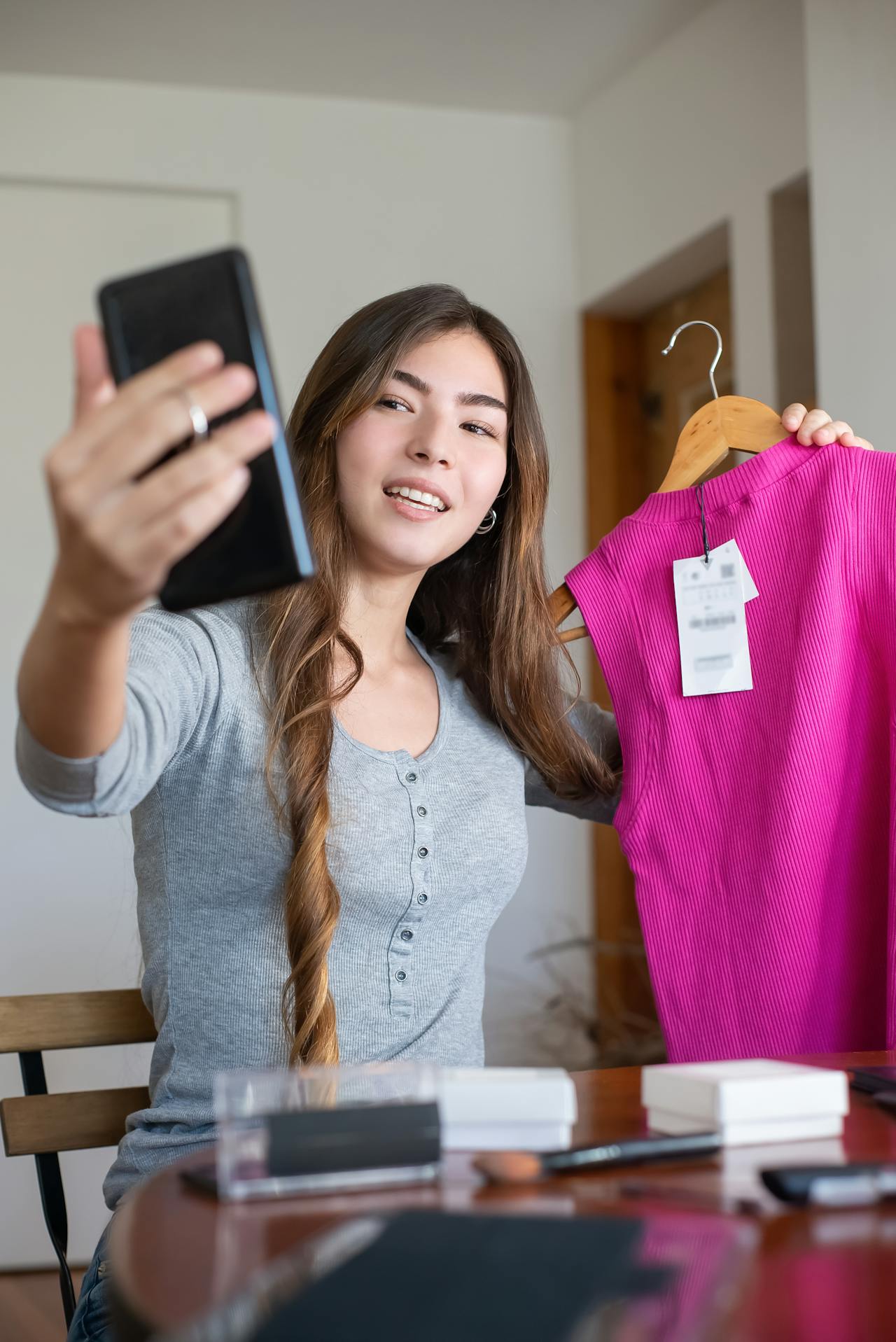Influencer Marketing Management
Influencer marketing has become a $30 billion industry, but managing successful campaigns requires more than just finding popular creators. Many brands struggle to build lasting partnerships, track results, and scale their efforts effectively. Without proper management, even well-funded campaigns can fail to deliver real business outcomes.
Influencer marketing has transformed the way brands connect with audiences. Instead of traditional ads, consumers now trust real voices—creators who share authentic stories and shape purchase decisions. Finding the right creators, organizing campaigns, tracking deliverables, and proving ROI can quickly become overwhelming without the right systems in place. That’s where influencer marketing management comes in.
Heepsy is an all-in-one influencer marketing management platform designed to simplify workflows for brands, agencies, and marketers. From discovery to ROI reporting, Heepsy brings every part of the influencer marketing journey under one roof—so you can scale campaigns with confidence.
Why Influencer Marketing Management Matters

Influencer marketing management is the process of overseeing relationships, campaigns, and contracts between brands and content creators to ensure collaborations run smoothly and deliver desired results. This involves everything from finding the right influencers to measuring campaign success. Companies can handle this work internally or partner with specialized agencies and platforms.
The complexity of managing multiple influencer relationships, tracking performance data, and coordinating campaign timelines has led to the rise of dedicated management tools and strategies. These systems help brands streamline their processes, maintain quality partnerships, and achieve better returns on their influencer marketing investments.
Running one influencer collaboration might feel simple: find a creator, agree on terms, and launch content. But when you’re managing dozens—or even hundreds—of influencers across multiple campaigns, complexity skyrockets. Without proper management, teams struggle with:
- Scattered data: influencers tracked in spreadsheets, emails, and DMs.
- Unverified profiles: risk of fake followers or poor engagement.
- Communication breakdowns: missed deadlines, unclear deliverables.
- Limited insights: difficulty proving ROI to stakeholders.
An effective influencer marketing management tool solves these challenges by centralizing discovery, vetting, campaign execution, and measurement into one streamlined workflow.
Key Takeaways
- Influencer marketing management oversees all aspects of brand-creator partnerships from start to finish
- Successful campaigns require strategic planning, careful influencer selection, and ongoing relationship management
- Proper measurement and optimization are essential for maximizing campaign performance and ROI
What Is Influencer Marketing Management?
Influencer marketing management combines strategic planning with hands-on campaign execution to connect brands with social media creators. This approach covers everything from finding the right influencers to measuring campaign success and building lasting partnerships.
Definition and Key Concepts
Influencer marketing management is the complete process of working with social media creators to promote brands and products. It involves finding influencers, building relationships, and running campaigns from start to finish.
This strategy uses people who have large followings on platforms like Instagram, TikTok, and YouTube. These creators share content about brands with their audiences. The goal is to increase brand awareness and drive sales through trusted voices.
Key elements include:
- Finding the right influencers for each brand
- Negotiating contracts and payment terms
- Creating campaign guidelines and content briefs
- Tracking performance and measuring results
- Managing ongoing relationships with creators
The process requires balancing what brands need with what influencers want. Successful management keeps both sides happy and creates content that feels natural to audiences.
Companies can handle this work in-house or hire agencies that specialize in influencer partnerships. Either way, the focus stays on creating authentic connections between brands and their target customers.
Role of Influencer Marketing in Digital Strategy

Influencer marketing fills gaps that traditional advertising cannot reach. Social media users often trust recommendations from creators more than brand ads. This trust leads to higher engagement rates and better conversion results.
Modern digital strategies use influencer content across multiple channels. Brands can repurpose influencer posts for their own social media accounts, websites, and email campaigns. This approach extends the value of each partnership.
Strategic benefits include:
- Access to specific audience segments
- Higher engagement than traditional ads
- Content creation at scale
- Improved brand credibility through third-party endorsements
Influencer partnerships work best when they align with broader marketing goals. Smart brands integrate these campaigns with their content marketing, social media strategy, and customer acquisition efforts.
The key is finding influencers whose audiences match the brand's target customers. A beauty brand might work with makeup tutorials creators, while a fitness company partners with workout influencers.
Types of Influencer Campaigns
Sponsored Posts are the most common campaign type. Brands pay influencers to create content featuring their products. These posts must include disclosure labels like #ad or #sponsored to follow legal requirements.
Product Collaborations involve influencers helping design or promote new items. This creates deeper partnerships and often generates more authentic content. The influencer becomes a true brand partner rather than just a paid promoter.
Brand Ambassador Programs build long-term relationships with select creators. These influencers represent the brand across multiple campaigns over months or years. This approach creates consistency and deeper audience connections.
Giveaway Campaigns use contests to boost engagement and grow follower counts. Influencers ask their audiences to follow the brand and tag friends for chances to win prizes.
Event Partnerships bring influencers to product launches, store openings, or brand experiences. These campaigns create real-time content and show the brand in action.
Each campaign type serves different goals and budgets. Successful management involves choosing the right format for each brand objective and influencer partnership.
Developing an Influencer Marketing Strategy
A strong influencer marketing strategy starts with clear goals and measurable targets. Brands must identify their ideal audience and create messages that connect with viewers through the right influencers.
Goal Setting and KPIs
Setting specific goals guides every decision in an influencer campaign. Brands should choose objectives that match their business needs and marketing budget.
Common influencer marketing goals include:
- Brand awareness growth
- Website traffic increases
- Lead generation
- Sales conversions
- Social media follower growth
Each goal needs matching KPIs to track success. Brand awareness campaigns might track reach and impressions. Sales-focused campaigns should measure conversion rates and revenue.
Smart brands set budgets upfront for influencer work. This helps them stay competitive and plan better campaigns.
KPIs should be realistic and time-bound. A goal like "increase website traffic by 25% in three months" works better than "get more website visitors."
Selecting Target Audiences
The right audience makes or breaks influencer campaigns. Brands must know exactly who they want to reach before choosing influencers.
Start by looking at current customers. What age groups buy the most? Which social platforms do they use? What interests do they share?
Create detailed audience profiles that include:
- Age range and location
- Income level and job types
- Social media habits
- Shopping behaviors
- Pain points and interests
Match these profiles to influencer followers. An influencer with 100,000 engaged followers in the target group beats one with 500,000 random followers.
Check audience overlap between different influencers. Too much overlap wastes budget and limits reach.
Crafting Effective Campaign Messages
Strong campaign messages feel natural and honest. They should match both the brand voice and the influencer's usual content style.
Give influencers key talking points instead of exact scripts. This keeps content authentic while covering important product features.
Essential message elements:
- Clear product benefits
- Honest personal experiences
- Specific call-to-actions
- Brand values alignment
Test different message approaches with small groups first. Some audiences respond better to educational content while others prefer entertainment.
Messages should solve real problems for viewers. Generic product promotion feels like ads and gets ignored.
Work with influencers to adapt messages for each platform. Instagram posts need different approaches than TikTok videos or YouTube reviews.

Identifying and Vetting Influencers
Finding the right influencers requires careful research into specific niches, thorough analysis of their audience engagement metrics, and detailed assessment of how well they align with brand values and messaging.
Researching Influencer Niches
Companies must start by mapping out relevant niches that connect to their target audience. Fashion brands should look beyond general lifestyle influencers to find micro-niches like sustainable fashion or plus-size styling.
Key research areas include:
- Hashtag analysis to find active communities
- Competitor influencer partnerships
- Industry-specific platforms and forums
- Emerging trends within target demographics
Tools like Heepsy help identify influencers who regularly create content in specific categories. Brands should track engagement patterns over 3-6 months rather than single posts.
Niche influencers often deliver better results than general lifestyle creators. A skincare brand targeting acne-prone teens will see stronger performance from dermatology-focused creators than beauty generalists.
Analyzing Engagement and Reach
Raw follower counts mean less than active, engaged audiences. Brands need to examine multiple metrics before making partnership decisions.
Critical engagement metrics:
- Engagement rate: 2-6% is typical for most platforms
- Comments quality: Real conversations vs. bot responses
- Story completion rates: Shows audience attention span
- Save and share rates: Indicates content value
Red flags include sudden follower spikes, repetitive comments, and engagement that doesn't match follower count. Tools like Heepsy can detect fake followers and bot activity. Heepsy provides many free tools for detecting fake followers, calculating influencer engagement and more.
Reach matters more than raw followers. An influencer with 50,000 engaged followers often outperforms someone with 200,000 inactive ones. Brands should request analytics screenshots showing recent performance data.
Assessing Brand Alignment
Successful partnerships require natural fit between influencer values and brand messaging. Misaligned partnerships feel forced and damage both parties' credibility.
Alignment factors to evaluate:
- Past brand collaborations and content themes
- Personal values expressed in content
- Audience demographics matching target customers
- Content style and tone consistency
Brands should review 6-12 months of content to understand the influencer's authentic voice. Someone who never posts about fitness shouldn't suddenly promote workout supplements.

Background screening prevents PR disasters. Check for controversial posts, legal issues, or content that conflicts with brand values. Many companies now use specialized vetting services to identify potential risks before partnerships begin.
Managing Influencer Relationships
Building strong connections with influencers requires structured onboarding processes, clear contract terms, and ongoing relationship maintenance. Success depends on establishing trust through transparent communication and fair compensation agreements.
Onboarding and Communication
The onboarding process sets the foundation for successful partnerships. Brands should create welcome packets that include campaign guidelines, brand values, and content requirements.
Clear communication channels prevent misunderstandings. Most brands use email for formal requests and messaging apps for quick updates.
Essential onboarding elements:
- Brand style guide and messaging
- Content approval process timeline
- Posting schedules and deadlines
- Performance expectations
Regular check-ins help maintain strong relationships. Weekly or bi-weekly calls work best for ongoing campaigns.
Brands should respond to influencer questions within 24 hours. Quick responses show respect for the influencer's time and build trust.
Clear feedback on content helps influencers improve. Specific suggestions work better than vague comments like "make it more engaging."
Negotiating Contracts and Compensation
Fair compensation builds lasting partnerships. Research shows influencers charge $100 per 10,000 followers for Instagram posts.
Common payment structures:
- Flat fee per post
- Performance-based payments
- Product exchanges plus cash
- Revenue sharing agreements
Contracts should cover usage rights clearly. Brands need permission to repost content on their channels.
Exclusivity clauses prevent influencers from working with competitors. Most brands request 30-90 day exclusivity periods.
Payment terms affect relationships. Net-30 payment schedules are standard, but faster payments improve partnerships.
Contract revisions happen often. Both parties should agree on content changes before posting deadlines.
Maintaining Long-Term Partnerships
Long-term partnerships cost less than finding new influencers. Repeat collaborations also perform better because audiences trust established relationships.
Regular relationship maintenance includes birthday messages, product launches updates, and industry news sharing. These small gestures strengthen connections.
Relationship maintenance tactics:
- Quarterly business reviews
- Exclusive product previews
- Invitation to brand events
- Social media engagement on personal posts
Performance tracking helps identify top partners. Brands should prioritize relationships with influencers who drive real results. Flexibility builds loyalty. Brands that adapt to influencer schedules and creative ideas see better long-term results. Annual contracts work well for proven partnerships. They provide income stability for influencers and consistent content for brands.
Executing Influencer Campaigns

Campaign execution requires careful coordination between brands and creators to produce authentic content that meets business goals. Success depends on clear communication, proper legal compliance, and active monitoring throughout the campaign lifecycle.
Coordinating Creative Content
Content coordination starts with a detailed creative brief that outlines campaign objectives, brand guidelines, and deliverable requirements. The brief should specify post formats, messaging themes, and visual elements while leaving room for the influencer's authentic voice.
Brands typically provide influencers with key talking points, product information, and brand assets. However, successful campaigns balance brand requirements with creator freedom to maintain authenticity.
Essential brief elements include:
- Campaign hashtags and mentions
- Key messages and product features
- Visual style preferences
- Content deadlines and publishing dates
- Performance expectations
Regular check-ins during content creation help prevent misaligned messaging. Many brands request content drafts before publication to ensure brand safety and message consistency.
Compliance and Disclosure Guidelines
Proper disclosure protects both brands and influencers from legal issues while maintaining audience trust. The Federal Trade Commission requires clear disclosure of paid partnerships in all sponsored content.
Influencers must use appropriate disclosure language that audiences can easily understand. Common disclosure methods include hashtags like #ad, #sponsored, or #paidpartnership placed prominently in posts.
Key compliance requirements:
- Disclosures must be clear and conspicuous
- Hashtags should appear early in captions
- Stories require disclosure stickers or text
- Video content needs verbal or visual disclosure
Platform-specific disclosure tools like Instagram's "Paid Partnership" feature provide additional transparency. Brands should educate influencers about disclosure requirements and monitor compliance across all content.
Approval and Scheduling Processes
Content approval workflows vary by campaign complexity and brand requirements. Simple campaigns may only require final approval, while larger initiatives need multiple review stages.
Most brands establish approval timelines ranging from 24 to 72 hours for content review. This timeframe allows for feedback incorporation without disrupting publishing schedules.
Common approval stages:
- Draft concept review
- Final content approval
- Publishing schedule confirmation
Scheduling tools help coordinate multi-influencer campaigns and optimize posting times for maximum reach. Brands often stagger content releases to maintain campaign momentum over several days or weeks.
Clear communication channels reduce approval delays and ensure influencers understand feedback requirements.
Monitoring Live Campaigns
Active campaign monitoring enables real-time adjustments and captures performance insights. Brands track engagement metrics, audience sentiment, and content reach during live campaigns.
Key monitoring activities include responding to audience comments, sharing high-performing content, and identifying potential issues before they escalate.
Critical monitoring metrics:
- Engagement rates and comment sentiment
- Reach and impression growth
- Click-through rates to brand content
- Hashtag performance and usage
Social listening tools help brands track campaign mentions and audience conversations beyond the original posts. This broader monitoring reveals campaign impact and identifies opportunities for engagement amplification.
Crisis monitoring protocols ensure brands can quickly address negative feedback or compliance issues that emerge during active campaigns.
Measuring and Optimizing Campaign Performance
Successful influencer marketing relies on tracking the right metrics and making data-driven improvements. Brands need proper analytics tools, clear reporting systems, and a process for continuous optimization to maximize their return on investment. Heepsy is one such tool which provides detailed influencer metrics, engagement metrics, detects fake followers and engagement rates to allow brands find authentic influencers.

Emerging Trends in Influencer Marketing Management
Artificial intelligence is reshaping how brands discover and work with creators, while smaller influencers deliver stronger engagement rates than mega-celebrities. Modern campaigns now span multiple platforms to reach audiences wherever they consume content.
AI and Automation
AI tools now help brands find the right influencers faster than ever before. These systems analyze audience demographics, engagement rates, and content quality in seconds.
Automated platforms can predict which creators will perform best for specific campaigns. They look at past performance data and audience overlap to make smart matches.
Key AI applications include:
- Creator discovery and vetting
- Performance prediction modeling
- Content optimization suggestions
- Real-time campaign monitoring
- Fraud detection and fake follower identification
Chatbots handle initial outreach to influencers automatically. This saves marketing teams hours of manual work each week.
AI also tracks campaign performance across platforms. It spots trends and suggests changes while campaigns are still running. This helps brands get better results without waiting for final reports.
Micro and Nano Influencer Strategies
Micro-influencers have 10,000 to 100,000 followers. Nano-influencers have fewer than 10,000 followers. Both groups often get higher engagement than celebrity influencers.
These smaller creators feel more relatable to their audiences. Their followers trust their recommendations more than ads from big stars.
Benefits of working with smaller influencers:
- Higher engagement rates (3-7% vs 1-2% for mega-influencers)
- Lower costs per post
- More authentic content
- Stronger audience trust
- Better niche targeting
Brands now work with 20-50 micro-influencers instead of one celebrity. This spreads risk and reaches more diverse audiences.
Nano-influencers cost much less but still drive real sales. A local fitness trainer might influence more gym memberships than a famous athlete.
Cross-Channel Campaign Integration
Smart brands run influencer campaigns across multiple platforms at once. Each platform reaches different audience segments and age groups.
Instagram works well for lifestyle content. TikTok captures younger users. LinkedIn targets business professionals. YouTube handles longer educational content.
Effective cross-channel strategies include:
- Adapting content formats for each platform
- Tracking unified metrics across channels
- Using consistent brand messaging
- Leveraging platform-specific features
- Coordinating posting schedules
Influencers now create different versions of the same campaign for each platform. A recipe video might be 60 seconds on Instagram but 5 minutes on YouTube.
Brands track total reach across all platforms instead of looking at each one separately. This gives a clearer picture of campaign success.
Cross-platform campaigns cost more upfront but reach wider audiences. They also protect against algorithm changes on any single platform.
Heepsy: Influencer Marketing Management Built for Results
Heepsy is built with one goal: to help marketers run smarter, more efficient influencer programs. Unlike basic databases or manual outreach, Heepsy offers a robust influencer marketing campaign management solution that integrates every stage of the process.
Here’s how it works step by step.
1. Discover Influencers with Precision
At the foundation of any campaign is the right creator. Heepsy helps you discover millions of verified influencers across Instagram, YouTube, TikTok, and Twitch. Instead of endless scrolling, you can use advanced filters to find creators based on:
- Location and language
- Industry or niche
- Follower count and engagement rate
- Audience demographics (age, gender, location)
- Brand mentions and authenticity metrics
Whether you’re launching a hyper-local campaign with micro-influencers or building global reach with top-tier creators, Heepsy’s influencer marketing management software makes it easy to match influencers with your goals.
2. Vet Profiles with Data-Driven Insights
Follower counts alone don’t guarantee impact. That’s why Heepsy provides deep analytics to validate influencer quality before you commit:
- Fake follower and audience authenticity detection
- Engagement rate benchmarks
- Sponsored post history and performance
- Posting frequency, style, and content categories
- Demographic breakdown of audience
With these insights, you can make data-driven decisions that minimize risk and maximize ROI.
3. Organize & Manage Campaigns in One Hub
Heepsy isn’t just a discovery engine—it’s a full influencer marketing management tool where you can plan, organize, and execute campaigns:
- Build influencer lists and segment by campaign or client
- Track outreach, communications, and deliverables
- Store contracts, notes, and payment information
- Set timelines and monitor content status
- Collaborate with teammates in real time
Instead of juggling spreadsheets and inboxes, everything lives in a centralized, intuitive dashboard.
4. Track Performance & Measure ROI
Proving the value of influencer marketing is one of the top challenges for brands. Heepsy solves this with built-in performance tracking:
- Impressions and reach
- Engagement metrics (likes, comments, shares)
- Cost per engagement (CPE)
- ROI and conversion data
- Exportable, visual reports for stakeholders
This makes it easy to demonstrate the impact of your campaigns and refine strategies for the future.
Features Tailored for Teams & Agencies
For agencies or brands managing multiple clients, Heepsy goes beyond single-user tools:
- Multi-user access and permissions
- White-labeled client reports
- Collaboration features for distributed teams
- Centralized management across markets and campaigns
The result: no more siloed spreadsheets or lost communications. Just seamless teamwork.
Why Choose Heepsy for Influencer Marketing Management?
With dozens of tools in the market, here’s why Heepsy stands out:
- ✅ All-in-one solution: discovery, analytics, campaign management, and influencer reporting.
- ✅ Data transparency: deep insights to validate influencer authenticity.
- ✅ Ease of use: intuitive design built for marketers, not just analysts.
- ✅ Direct relationships: no middleman fees or interference.
- ✅ Global scale: search influencers across 150+ countries.
This combination makes Heepsy the ideal influencer marketing management platform for brands of all sizes.
The Heepsy Workflow: From Discovery to ROI
Let’s break down how Heepsy supports the full influencer marketing lifecycle:
- 🧭 Discovery – Use advanced filters to find authentic influencers aligned with your goals.
- 🔍 Vet – Validate audiences with transparent analytics and fraud detection.
- ✉️ Outreach – Organize contacts, track communications, and streamline negotiation.
- 📈 Manage – Centralize campaign deliverables, timelines, and payments.
- 📊 Measure – Generate real-time reports to assess ROI and optimize strategy.
With Heepsy, influencer marketing becomes a scalable, measurable growth channel—not a chaotic experiment.
Frequently Asked Questions
Q: What makes Heepsy different from other platforms?
Heepsy unifies discovery, analytics, campaign management, and reporting—without charging extra fees on influencer payments.
Q: Can I track ROI and performance with Heepsy?
Yes. You’ll get real-time insights on reach, engagement, conversions, and ROI.
Q: Which platforms does Heepsy cover?
Instagram, YouTube, TikTok, and Twitch.
Q: Is Heepsy right for small businesses?
Absolutely. Heepsy’s flexible pricing and intuitive tools work for startups, SMBs, and large enterprises.
Q: Do I need influencer marketing experience to use it?
Not at all—Heepsy is built for marketers at every skill level.
Get Started with Heepsy Today
Influencer marketing doesn’t have to be messy or hard to measure. With Heepsy, you can discover the right influencers, manage campaigns seamlessly, and track ROI—all in one place.
👉 Start your free trial today—no credit card required. Just results.



